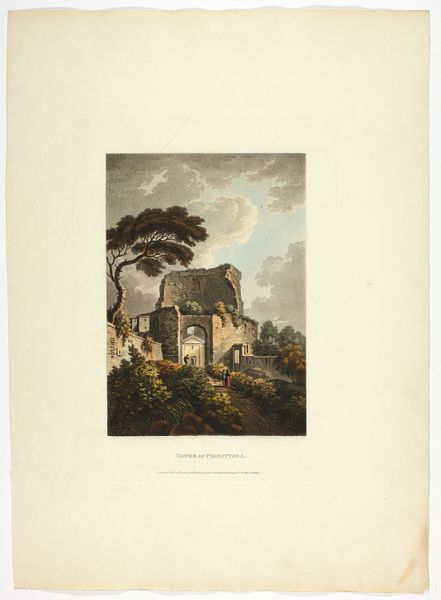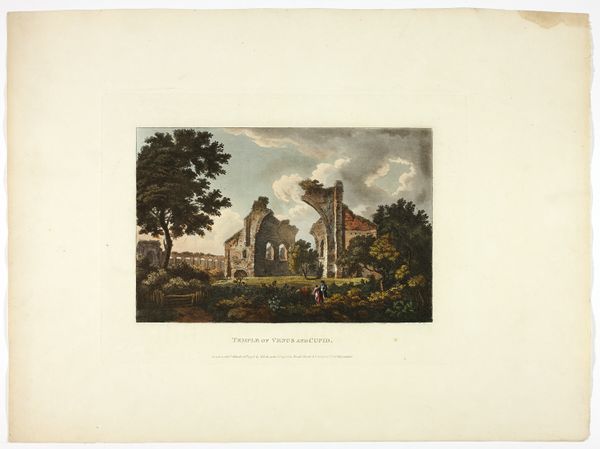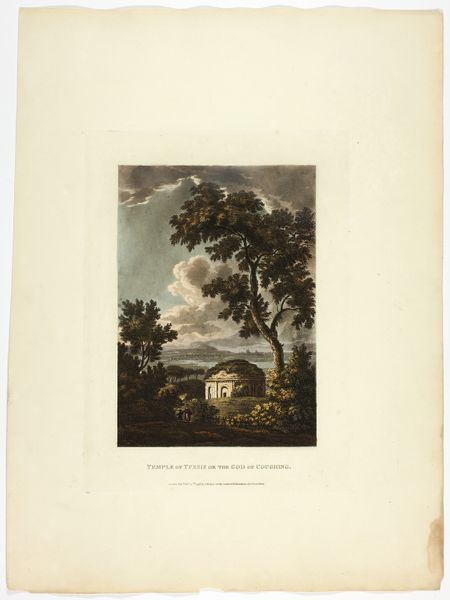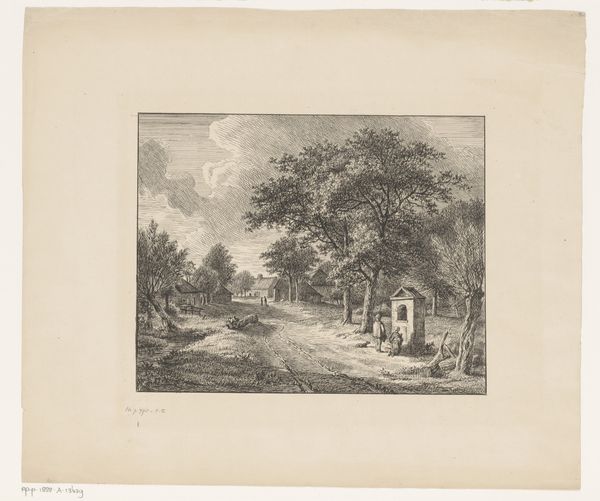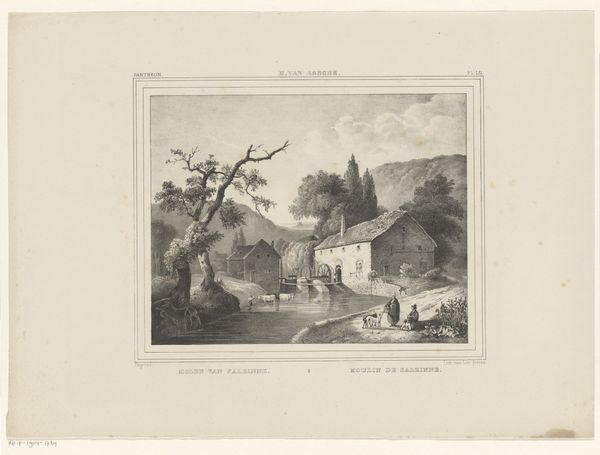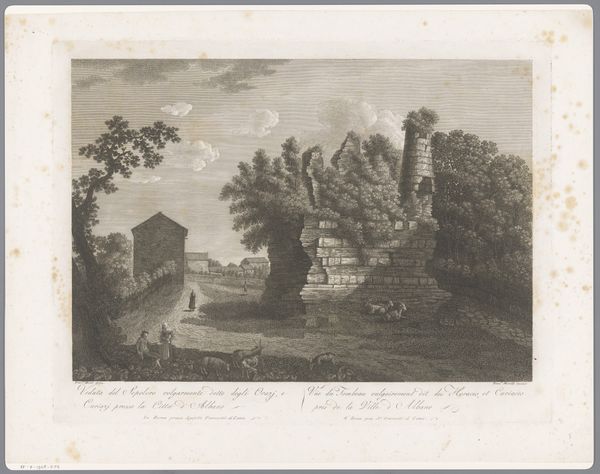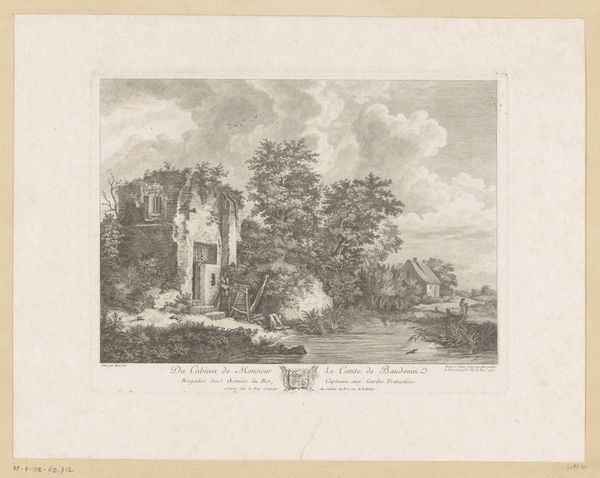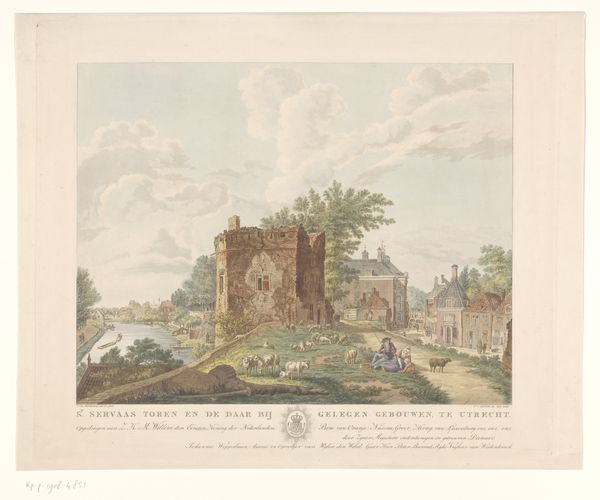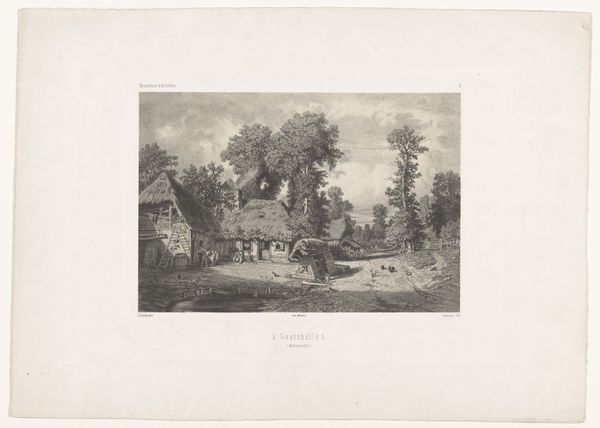
Temple of Minerva Medica, plate twenty-five from the Ruins of Rome Possibly 1798
0:00
0:00
drawing, print, paper, watercolor
#
drawing
#
water colours
# print
#
landscape
#
paper
#
romanesque
#
watercolor
#
watercolor
Dimensions: 448 × 330 mm (sheet)
Copyright: Public Domain
Curator: Let's turn our attention to "Temple of Minerva Medica, plate twenty-five from the Ruins of Rome" possibly from 1798, by M. Dubourg. It’s a print made with watercolor, showing the ruined temple set in a verdant landscape. Editor: Oh, wow. The overall mood is melancholic, a bit ghostly even. It’s romantic in the most dramatic sense – ruined grandeur meeting overgrown nature. Makes me think of empires fading, beauty persisting even in decay, that whole shebang. Curator: Indeed. You can see Dubourg’s print production. He utilized watercolor as a means of achieving detailed reproductions efficiently. Prints were circulated and collected, thereby transforming the perception and commodification of cultural heritage through popular images. Editor: Right, because if someone important didn't see it as a *print,* it barely existed. I get the appeal – a pocket-sized ruin. The human figures really accentuate the scale; we have people walking nonchalantly by as history looms right behind them. Sort of ironic, isn’t it? We, now, gaze from centuries later. Curator: Yes, consider how the process of reproduction impacted perception. Mass produced images helped solidify this view of Rome as a place for romantic and sometimes desolate ruin contemplation, therefore also spurring its own form of industry. It speaks of changing patterns of consumption around cultural imagery at this time. Editor: So it's less about Minerva and more about... tourism? Still, that hazy rendering of the dome’s collapse—that *is* rather fetching. Sort of dreamy, even while depicting rubble. Gives a sense that time isn't linear or straightforward. The trees and overgrowth feel very present, pushing up against the ruins. Curator: Well, precisely. And how is this consumption framed? Here, a sublime scene can also be replicated and possessed. Watercolors in print also lowered the barrier to owning artistic visions, altering their role in class and cultural spheres. Editor: I think I appreciate the artist leaning into both grandeur and the slightly pathetic, broken-down aspect all at once. I feel ready to be a melancholy poet... at least until I’m hungry! Curator: Thank you. That provided a broader appreciation of Rome's history and the rise of visual image consumerism through prints and watercolor.
Comments
No comments
Be the first to comment and join the conversation on the ultimate creative platform.
